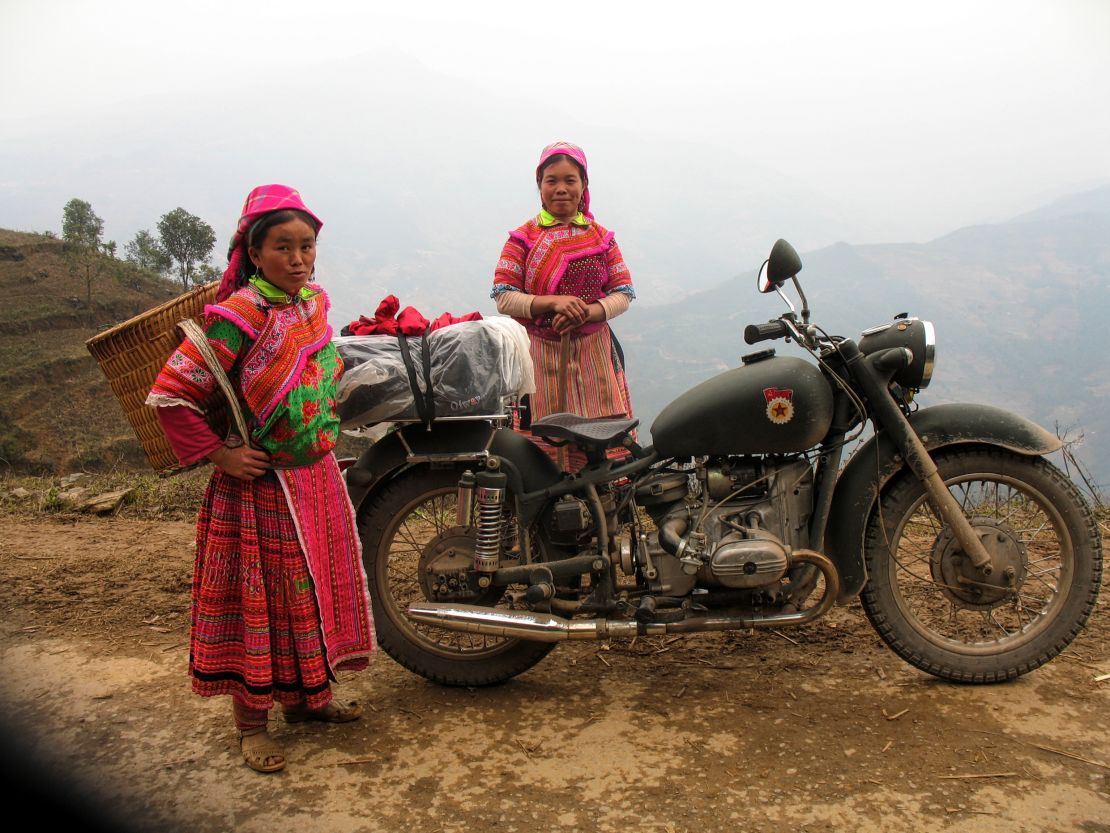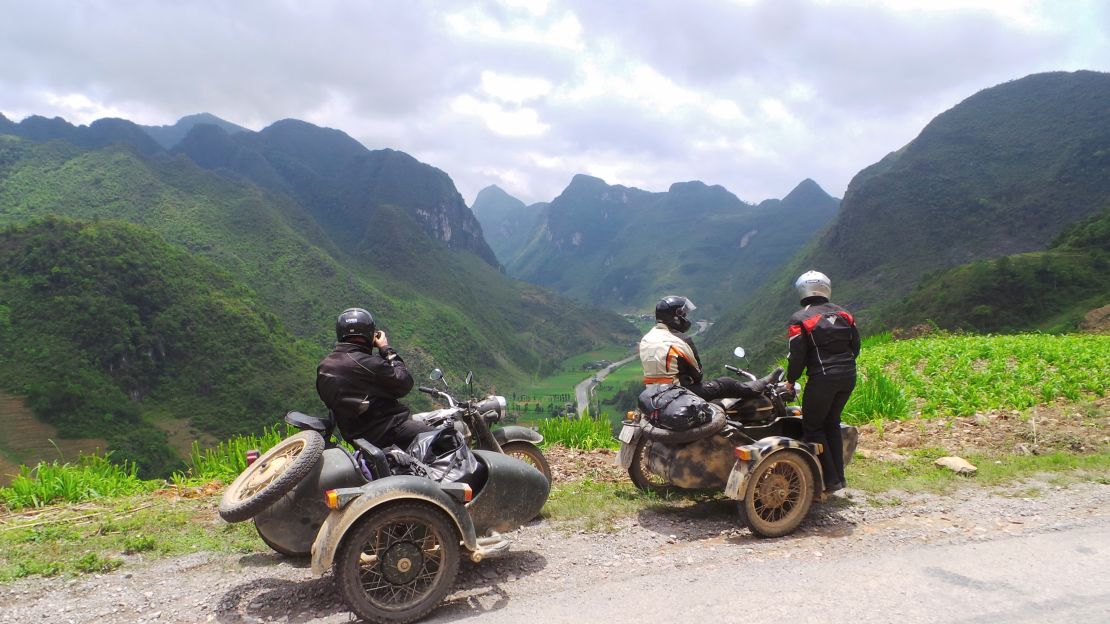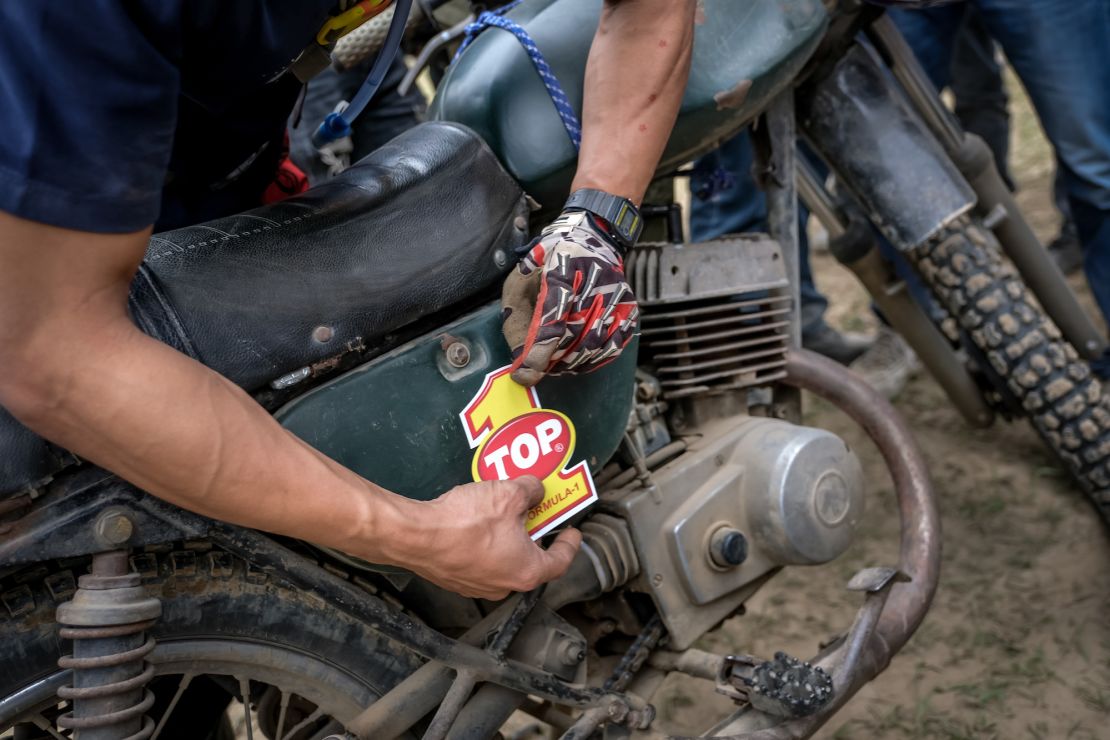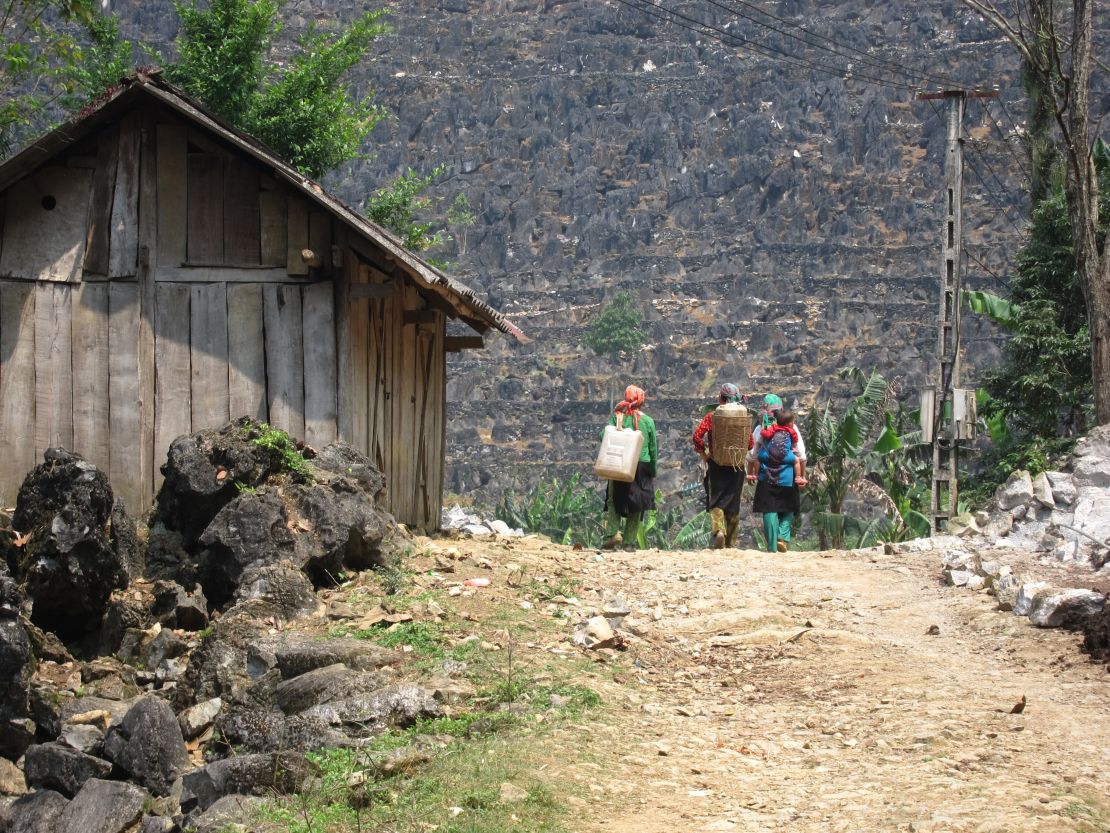Hanoi might be famous for its scooters, but the city’s youth is shifting gears.
During an off-roading tournament in November, young motorcycle enthusiasts ripped through the mud in the countryside outside Hanoi.
They weren’t driving jeeps or four-wheelers, but rather retro-looking Minsk bikes that date back to the Soviet Union.
“In 2010 these bikes started to make a comeback among young people, and all of a sudden there were a lot more events and races,” Steve Christensen, a tour guide at Cuong’s Motorbike Adventure, tells CNN.
“Some young people are turning their backs on overt displays of consumerism in Vietnam and instead embracing this vintage motorbike style and their DIY spirit – embodied in the Minsk.”
Hanoi’s ‘iron buffaloes’

An original member of the Minsk Club, Christensen has criss-crossed Vietnam on the back of various vintage motorbikes.
“People describe them as ‘iron buffaloes’ – sometimes difficult to start, but once it’s running, it will go anywhere,” says Christensen. “While driving, they vibrate like crazy – bits fall off along the way.”
First manufactured in the Belarus city of Minsk (then part of the USSR) in 1951, the bikes were first introduced to Vietnam in the 1960s and then officially imported from the 1970s to the 1980s.
It was the most popular bike in Vietnam for the next 20 to 25 years, owned by doctors and farmers alike.
“Many of the Minsks were brought to Vietnam in the late ’80s by Vietnamese people working in the former Soviet Union,” says Tommy Nguyen, co-founder of Hanoi Backstreet Tours.
“They would buy bikes really cheap there and sell them in Vietnam for a profit. There were not many bikes available then and they could get them in the country for little to no tax compared to a Japanese bike at the time.”
Simson bikes were also a popular import from the former East Germany.
“However, Minsk was more favorable as it is much stronger and bigger,” adds Nguyen.
In the 1990s, after the collapse of the USSR, Vietnam established new international trade deals and began importing American, Chinese and Japanese scooters.
Meanwhile, the Minsk bikes – also known as M1A or M1NSK – found refuge in the countryside, where they were used like mules.
Able to cart around everything from cattle to furniture, the sturdy bikes enabled farmers and villagers to ply the steep mountainsides.
“They were more popular in the north, partially because of the connection with Eastern Bloc countries, and the mountains roads were nearly impassable,” says Christensen.
“Using a scooter like a Honda Dream was not an option for farming communities. The Minsk were strong and could carry heavy loads.”
The first wave
Toward the turn of the century, groups of expats began to re-discover the sturdy old bikes.
In 1998, the first Minsk Club was established and the group took regular country rides together.
“The cult of the Minsk developed with our love of the country and exploring the mountains of the north,” says Christensen.
“At the time it was the best bike available for driving around the bad country roads (because of high taxes on other imports).”
“It was also a way of connecting with locals and hill tribe people, because we shared the same machines. They can be fixed in just about any village, though they do require fixing all the time.”
Minsk madness

Minsk bikes are still unreliable, loud and terrible for the environment – known to billow exhaust fumes into the air.
They’re not particularly fast, either – ranging from about 30 to 60 miles an hour – and require constant mechanical upkeep.
Despite their shortcomings, a new generation of Vietnamese love them.
Why? They’re generally affordable (running around $300-400 for a second-hand bike) and relatively easy to kit out with custom parts.
“Over the past few years, more and more young Vietnamese have taken up the Minsk out of a sense of adventure,” says Christensen.
“They are turning away from the status symbol of a flashy city scooter and, instead, exploring their country and roughing it in the old Soviet-era style,” says Christensen.
The avid rider says the trend is proliferating across the northern Vietnam countryside, where youth organize Minsk clubs and events in smaller towns.
“These kids really love their bikes and the sense of freedom that it brings,” he adds.
Nguyen of Hanoi Backstreet Tours, tells CNN the bikes’ resurgence also reflect the rejection of modern consumerist values.
“Minsk are strong and manly. They’re rude in the maze of back streets of Hanoi,” he says.
“It is a trip down to our memory lane, when Vietnamese people to think about the era of collectivism.”
Free-wheeling
There are not too many vintage motorbikes left in Vietnam today – perhaps 6,000 by Nguyen’s estimate.
But if you see one, it’s hard to miss.
“At the moment, the Soviet bike of choice is the 650 Ural with sidecar,” says Christensen. “It’s bigger and has the classic look – the design has not been changed since World War II.”
Like the Minsk, these vintage motos promise a thrilling ride through the Vietnamese countryside.
“The most spectacular ride in the north is along the border with China in Ha Giang province,” says Christensen.
“The high mountains of black limestone and hill tribes make this a great experience.”
On the weekends, riders might make a pit stop at markets and have a chance to interact with Vietnamese villagers.
“We try to go on the back roads and single dirt tracks through the forest. The scenery is wild,” says Christensen.
“I think it’s better to meet people in small groups along the road or in villages to get a sense of how they live and chat over cups of rice liquor.”
Ticket to ride

As these beasts of burden are notoriously moody, it’s not a recommended experience for first-timers.
“You really need to take a few precautions – like wearing proper riding gear,” says Christensen. “Wearing a $3 helmet, shorts and flip flops is not OK.”
“So many backpackers just jump on a bike and go. I see them on the road and am terrified for them. The leading cause of death is motorbike accidents in Vietnam. One slip up and the holiday is over.”
To rent or ride on a Minsk tour in Vietnam, travelers will need a valid motorcycle license from their home country and insurance.
Ready to ride? Here are a few rental and tour options:

Cuong Motorbike Adventure: Helmed by Mr Cuong, a top motorcycle mechanic in Vietnam and original Minsk Club member, Cuong Motorbike Adventure runs three- to 10-day tours across the countryside, northern mountains and along the Ho Chi Minh Trail.
The outfit offers tours on a fleet of Minsk bikes, vintage 650cc Ural sidecars (purchased from the Vietnamese police force) and Honda CRF250s.
Cuong Motorbike Adventure, 122 Vinh Tuy Street, Hai Ba Trung District, Hanoi 10000, Vietnam; +84 91 876 35 15
Flamingo Travel: Another option is Flamingo Tours, which provides rental services and a mix of guided tours through the mountains and along the coastline.
The service also provides everything you need, from a helmet to toll kit, raincoat, 24-hour support, mechanics and more.
Flamingo Travel, 66 Dao Duy Tu, Hoan Kiem District, Hanoi, Vietnam; +84 91 221 4554
Backstreet Real-life Experience: Prefer to stay closer to town? Hanoi Backstreet Real-life Experience promises half- and full-day Minsk motorcycle jaunts through the city’s narrow streets and alleyways.
On these food- and culture-focused tours, travelers can experience the ‘real’ Hanoi.
Hanoi Backstreet Real-life Experience, 48 Ma May Street, Hoan Kiem District, Hanoi, Vietnam; +84 911 869 900
We Ride Vietnam Travel: Meanwhile, We Ride Vietnam Travel specializes in customized adventure motorcycle rides through the countryside, particularly in rugged areas of Vietnam and Laos.
The 12- to 14-day Hanoi to Saigon tour, for example, routes bikers along the Ho Chi Minh Trail – through beaches, cities, jungles and war sites.
We Ride Vietnam, 98 Alley 90, Bui Ngoc Duong Street, Hai Ba Trung District, Hanoi, Vietnam; +84 1689 475 688






















